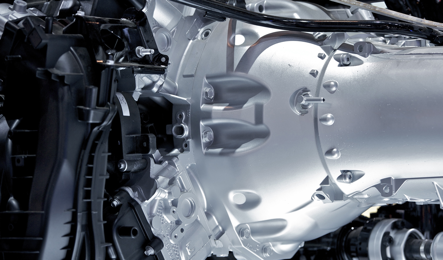Automatic Transmission Removal
When a transmission stops working, the most likely cause is most often deep inside the component, and sometimes the most cost effective way to handle the issue is to replace it. But removing and replacing a transmission is tricky.
Remember, transmissions don't stand alone. They're an integral part of the car and a wide knowledge of automobiles as a whole, as well as specific knowledge of the techniques required to remove and replace a transmission, is necessary. The following list should give you an idea of just some of the steps that a technician will go through to remove a front-wheel-drive automatic transmission.

Automatic Transmission Refitting
Depending on the year, make and model of the vehicle you're working on, the actual list of things to do can be much longer and more involved. It also doesn't take into account rusty bolts, corroded fittings and the fact that transmissions can weigh hundreds of pounds and are difficult to maneuver in confined spaces -- like the engine compartment. But once the transmission is out, the real work begins. If the transmission is being replaced, the new transmission, either reconditioned or new, must be checked out. The front pump and torque converter also need to be inspected and installed, and all sensors, solenoids, valve body and filters changed out, replaced and checked.
If an overhaul is recommended, the transmission is disassembled, each part is inspected and measured, and worn components are replaced, as well as seals, bearings and bushings. Once everything is ready to go, the transmission is then reassembled.





